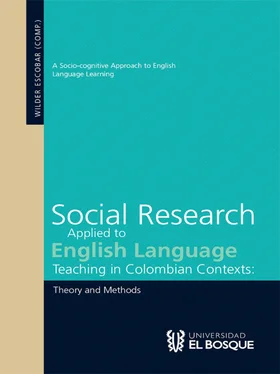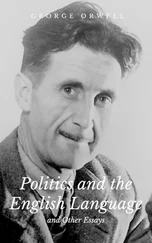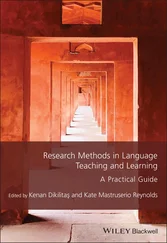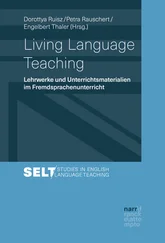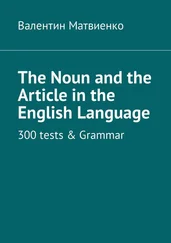In conclusion, the aforementioned attributes of knowledge, language, and learning posit that the teaching of English as a foreign language as a socio-cognitive process which must incessantly question social factors for its planning and implementation. The forthcoming chapters are practical examples presenting theory and methods which profoundly study processes of culturally-mediated verb patterns, social dynamics, emotional barriers, socio-cultural backgrounds, and social sensitivity in regards to English language teaching and learning in the Colombian context.
Chapter One The Linguistic Typology of Verb Structure: A Comparative Approach for the EFL Classroom
Reid Evans currently works as the Director of Special Programs at the Montessori British School in Bogotá, Colombia, as well as a research collaborator with Universidad El Bosque focusing on multilingual literacy and academic writing. He has studied foreign-language education at the undergraduate level and has subsequently earned an M. S. in literacy education from the State University of New York at New Paltz. His research interests include: second-language acquisition theory, multilingual literacy, morphology, linguistic typology, and foreign-language advocacy.
The Linguistic Typology of Verb Structure: A Comparative Approach for the EFL Classroom
Introduction
Any teacher of English as a foreign language will attest that English verb construction in colloquial speech presents, quite possibly, one of the largest obstacles in L2 English language acquisition. The difficulty related to the comprehension of the syntactic and semantic properties of English phrasal verbs 1, particularly those expressing events of motion, has been indicated by numerous researchers (Ganji, 2011; Ibarretxe-Antuaño, 2004; Ionin & Zubizarreta, 2010; White, B. J., 2012). In their examination of English verb construction, they have pointed directly to the specific linguistic phenomena that make English structurally different from Spanish. These differences, it has been argued, often transfer from the learner’s L1 and hinder the development of L2 English ability (Almeida, 2002; Brown & Gullberg, 2010; Cadierno, 2004; Casado Antoniazzi, 2010; Slobin, 1987).
In accordance with the aforementioned research findings, there exist abundant resources for phrasal verb teaching designs and classroom practices aimed at increasing EFL students’ comprehension and production within this capacity (Alejo González, R., Piquer Píriz, A. & Reveriego Sierra, G., 2010; White, B. J., 2012). However, much of the previous research, as well as the bulk of the proposed instructional design, fail to elucidate the specific syntactic dissimilarities that exist between English and Spanish verb structure. Researchers merely acknowledge such a linguistic dichotomy, yet rarely attempt to develop didactic knowledge in this area (Alejo González et al., 2010; Casado Antoniazzi, 2010; Larrañaga, P., Treffers-Daller, J., Tidball, F. & Gil Ortega, M., 2011; Pozdnyakova & Gunina, 2011; Spring, 2010). As noted by White (2012), “teaching suggestions are often confined to brief pedagogical applications sections at the end of research articles” (p. 420) and, consequently, offer little in terms of instructional guidelines.
The goal of this chapter, however, is perhaps a bit more ambitious. There is a pressing need to recognize the difference in linguistic structuring, referred to henceforth as typology (Talmy, 2000), and to communicate this knowledge both to EFL teachers and their students alike. As such, this chapter carries two distinct objectives in relation to the English phrasal verb construction enigma. First, the typological differences which dictate Spanish and English verb construction will be interpreted within the realm of phrasal verbs, thus providing educators with the essential expertise to incorporate this knowledge into the EFL classroom. Secondly, didactic strategies for phrasal verb instruction grounded on the current research within the field of cognitive linguistics will be discussed as to provide novel approaches to EFL instruction. It is hoped that the EFL instructor will take away a new understanding of English verb construction so that a clearer picture may be delivered to L2 English learners.
Linguistic Typology and Verbs of Motion
To a native English speaker, the fabled lines “Jack fell down and broke his crown/ And Jill came tumbling after,” rarely evoke second thoughts as to the inherent structure of the English verb phrase in relation to the manner, motion, and path of movement. In fact, it undoubtedly requires minimal cognitive effort on behalf of the native English speaker to construct verb expressions of this nature as our lexicon is brimming with phrases such as falling down, tumbling after, trudging along, drifting by, and dropping in. Integral to these expressions is the element of path of motion, or trajectory, represented by an adverb or preposition and not directly encoded on the verb itself. Such a phenomenon has been the direct focus of the work of Leonard Talmy, in which he has set the guidelines for linguistic classifications within the realm of language typology. Talmy’s (2000) designation of typology separates languages into two main categories, that of satellite-framed and verb-framed languages, both of which are entirely dependent upon the conflation of manner, motion, and path in events of motion. Satellite-framed languages, including English, are defined by their reliance on satellites which are added to the verb to depict the path of motion (Larrañaga et al., 2011). “Jack fell down,” as the popular nursery rhyme suggests, requires the use of the preposition down to depict the path of Jack’s falling. In contrast, verb-framed languages, like Spanish, depict motion events in a different way, generally encoding the path of the motion directly on the verb (Spring, 2010; Ibarretxe-Antuaño, 2009). This becomes apparent in the Spanish translation of the aforementioned nursery rhyme: “Jack se cayó.” In this case, both the action of falling, as well as the movement of the figure in regards to the ground, are encoded on the verb itself. As such, these typologies as defined by Talmy (2000) make specific reference to the formation of events of motion within a particular language.
As demonstrated above, such classifications of typology stress the importance of path of motion in the construction of motion events in verb– and satellite–framed languages. The satellite, although not a lexical category in its own right, represents a semantic function inherent in s-framed languages: that of displaying the path (p) or trajectory of the figure (f ), or the locative element in a motion event. Note that, according to Talmy (2000), a motion event may be defined as “a situation containing motion, or the continuation of a stationary location alike” (p. 25); therefore, the figure may be considered to participate in a motion event that is either that of translational motion (1a), or simply that of maintaining a stationary position (1b). The following examples are provided to demonstrate the difference of the motion events described above:
(1a) The boy (f) got out of (p) the chair.
(1b) The boy (f) sat up (p) anxiously in the chair.
Both of these phrases demonstrate the completion of an action that is either translational in nature (1a), or that describes the perpetuation of a spatial position (1b). The action of getting out of a chair clearly delineates a change of location, while that of sitting up maintains the spatial position, albeit with a change of posture.
In verb-framed languages, however, such syntactic constructions are not possible. In her work on linguistic typology, Ibarretxe-Antuaño (2004, 2009, 2012) clearly establishes the elaboration of path in verb-framed languages. Whereas satellite-framed languages routinely express path via a satellite, in verb-framed languages “the core information is not expressed in a separate element, but usually conflated with the verb” (Ibarretxe-Antuaño, 2012, p. 6). This idea is clearly expressed in the following examples of grammatical phrases in Spanish:
Читать дальше
